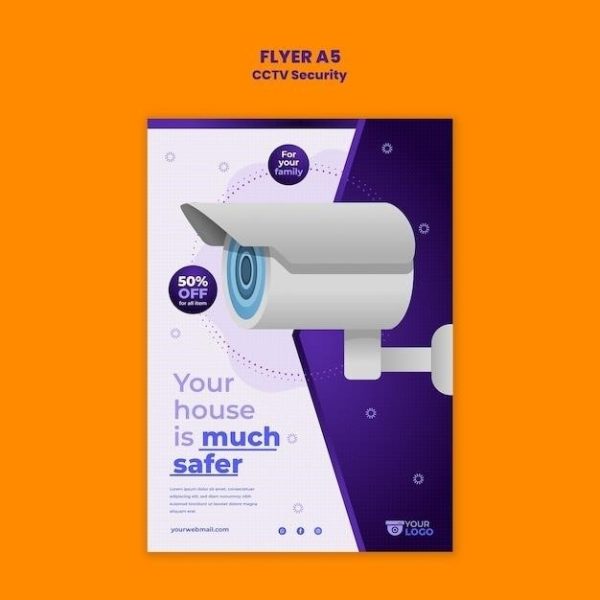Raster DVR Manual⁚ A Comprehensive Guide
This comprehensive guide provides a detailed explanation of the features, installation, operation, and troubleshooting aspects of Raster DVR systems․ Whether you are a novice user or an experienced security professional, this manual will equip you with the necessary knowledge to effectively utilize your Raster DVR for enhanced security and peace of mind․
Introduction
Welcome to the Raster DVR Manual, your comprehensive guide to understanding and utilizing your Raster DVR system․ This manual provides a step-by-step walkthrough of the features, installation process, recording and playback options, remote access capabilities, and troubleshooting tips․ Raster DVRs are renowned for their reliability, user-friendliness, and advanced security features, offering comprehensive surveillance solutions for homes, businesses, and various other applications․ Whether you are a first-time user or seeking to enhance your existing security setup, this manual will empower you to maximize the potential of your Raster DVR․
Key Features and Functionality
Raster DVRs are packed with advanced features designed to provide comprehensive security solutions․ These include high-definition recording capabilities, supporting resolutions up to 1080p for crystal-clear footage․ Motion detection alerts you to suspicious activity, while the remote access feature allows you to monitor your property from anywhere with an internet connection․ Raster DVRs also offer a variety of recording modes, including continuous recording, scheduled recording, and event-triggered recording, providing flexibility to tailor your security needs․ The user-friendly interface makes navigating the system intuitive, while the robust build ensures reliable operation․
Installation and Setup
Installing your Raster DVR is a straightforward process․ Start by carefully unpacking the unit and connecting it to a power source․ The DVR should be placed in a well-ventilated area, avoiding direct sunlight or excessive heat․ Next, connect your security cameras to the DVR using the provided cables․ Once the physical connections are complete, you’ll need to configure the DVR settings․ This involves accessing the user interface, typically via a web browser, and setting up the date, time, network settings, and recording preferences․ For optimal performance, it’s recommended to connect the DVR to your network using a wired connection․
Connecting to the Network
Connecting your Raster DVR to your network is crucial for accessing and managing it remotely․ The DVR typically supports both wired and wireless connections․ For a more stable and reliable connection, a wired Ethernet connection is recommended․ To connect via Ethernet, simply plug one end of an Ethernet cable into the DVR’s Ethernet port and the other end into your router․ If you prefer a wireless connection, ensure your DVR has a built-in Wi-Fi adapter or an external Wi-Fi dongle․ Once connected, you’ll need to configure the DVR’s network settings, including the SSID and password of your Wi-Fi network; This allows the DVR to communicate with your network and access the internet․
Configuring the DVR
After connecting your Raster DVR to the network, you need to configure its settings to personalize your security system․ Begin by accessing the DVR’s web interface through a web browser on your computer․ This typically involves entering the DVR’s IP address into the browser address bar․ You will be prompted to log in using the default username and password, which is usually “admin” for both․ Once logged in, you’ll be able to configure various settings, including time and date, recording schedules, motion detection sensitivity, and camera settings․ You can also adjust the video resolution and frame rate to optimize recording quality based on your needs․ It’s important to set up a strong password for your DVR to prevent unauthorized access․
Recording and Playback
Raster DVRs offer powerful recording and playback capabilities to ensure you capture and review critical footage whenever needed․ You can set up different recording modes to suit your security requirements․ Continuous recording captures footage constantly, while motion detection recording triggers recording only when movement is detected, saving storage space․ Schedule-based recording allows you to set specific times for recording, ideal for areas with predictable activity patterns․ Once recordings are stored on the DVR’s hard drive, you can easily access and playback footage using the DVR’s interface or remotely via a mobile app or web browser․ Raster DVRs often support various playback features, including time-lapse viewing, slow-motion playback, and the ability to search recordings based on specific dates or events․
Recording Modes
Raster DVRs offer a range of recording modes to cater to different security needs․ Continuous recording captures footage continuously, providing a comprehensive record of events․ Motion detection recording, a more efficient option, triggers recording only when movement is detected, saving storage space and ensuring you don’t miss critical events․ Schedule-based recording allows you to customize recording times based on your specific needs․ For example, you can set the DVR to record only during business hours or during certain time windows when activity is expected․ This mode helps optimize storage usage and allows you to focus on relevant footage․
Playback Options
Raster DVRs offer flexible playback options to ensure you can easily review recorded footage․ The DVR’s interface allows you to easily navigate through recorded footage by date, time, and event․ You can playback footage at different speeds, including slow motion, to meticulously examine details․ Searching by specific events, such as motion detection triggers or alarm activations, allows you to quickly locate relevant recordings․ You can also export recordings to various formats for sharing and archiving purposes․ This feature is particularly useful for legal purposes or for sharing evidence with authorities․ With these playback options, you can efficiently review and manage your security recordings, making it easier to identify critical incidents and respond accordingly․

Remote Access and Monitoring
Raster DVRs offer the convenience of remote access and monitoring, allowing you to stay informed about your property’s security from anywhere with an internet connection․ This feature is particularly valuable for businesses, homeowners, and individuals who want to keep an eye on their property while away․ You can access live video feeds, review recorded footage, and even control certain DVR settings remotely․ Raster DVRs often support web-based access, allowing you to monitor your system through a web browser on your computer, laptop, or tablet․ Additionally, mobile apps are available for both iOS and Android devices, enabling you to monitor your system on the go․ Whether you are on vacation, traveling for work, or simply want to check in on your home or business, remote access and monitoring provides peace of mind and allows you to stay informed about your property’s security․
Using the Mobile App
Raster DVRs often come with a dedicated mobile app, allowing you to access and manage your security system from your smartphone or tablet․ This app provides a user-friendly interface for monitoring live video feeds from your cameras, reviewing recorded footage, and even controlling certain DVR settings․ The app typically allows you to set up notifications for motion detection or alarm events, ensuring you are alerted to any suspicious activity․ You can also use the app to adjust camera settings, such as zoom, brightness, and contrast, remotely․ The app’s intuitive design makes it easy to navigate, even for users who are not tech-savvy․ With the Raster DVR mobile app, you can keep a watchful eye on your property from anywhere, anytime, providing you with peace of mind and enhanced security․
Web-Based Access
Raster DVRs often provide web-based access, allowing you to manage and monitor your security system from any computer with an internet connection․ This feature is particularly useful for businesses or organizations that require remote access to their security system․ Using a web browser, you can log into your Raster DVR’s web interface, which offers a variety of functionalities, such as live video viewing, recording playback, and system configuration․ The web interface provides a user-friendly dashboard with clear controls for managing your cameras and recording settings․ You can also view and download recorded footage directly from the web interface, making it convenient for evidence retrieval or review purposes․ With web-based access, you can maintain a constant eye on your premises and ensure the safety and security of your assets, regardless of your physical location․
Troubleshooting and Support
While Raster DVRs are designed for reliable operation, occasional technical issues may arise․ This section provides guidance on common problems and their solutions․ If you encounter difficulties, first consult the troubleshooting section within the Raster DVR’s user manual․ This manual outlines common problems and their corresponding resolutions․ If you are unable to find a solution within the user manual, consider checking the Raster DVR’s online support forums․ These forums offer a platform for users to share experiences and seek assistance from other Raster DVR users and support staff․ If you are still unable to resolve the issue, contact Raster’s customer support team directly․ They offer technical assistance through email, phone, or live chat․ Raster’s customer support team is available to provide prompt and professional assistance for all your DVR-related needs, ensuring a smooth and efficient operation of your security system․
Common Issues and Solutions
Raster DVR users often encounter a range of common issues․ These issues can often be resolved with simple troubleshooting steps․ For instance, if your Raster DVR is unable to connect to the internet, ensure that your network connection is stable․ Check your router’s settings and ensure that the DVR is connected to the correct Wi-Fi network․ If you are still unable to connect, try restarting your router and DVR․ Another common issue involves the inability to view live footage on your mobile device․ This problem might stem from a misconfigured mobile app․ Verify that the app is correctly connected to your DVR’s IP address and that the port forwarding settings on your router are properly set up․ If you are experiencing problems recording video, confirm that the hard drive has sufficient storage space․ If the hard drive is full, delete older recordings or upgrade to a larger capacity hard drive․ By following these simple troubleshooting steps, you can resolve many common Raster DVR issues and ensure smooth operation of your security system․
Contacting Raster Support
Raster offers a dedicated support team to assist customers with any technical issues or inquiries they may encounter․ You can reach out to Raster support through various channels, including their official website, email, and phone․ The company’s website provides detailed information about their products, including FAQs, user manuals, and contact information․ You can also access their online support forum where you can connect with other Raster users and seek assistance from the community․ If you prefer a direct approach, you can email their support team or call their customer service hotline․ Raster’s support team is committed to providing prompt and efficient assistance, ensuring a positive customer experience and resolving any technical challenges you may face․



